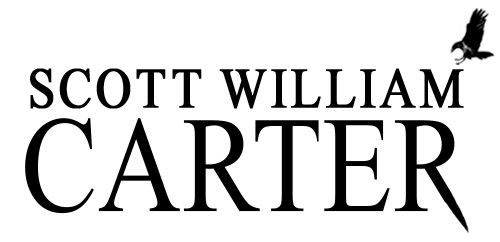Yesterday I made my second short story sale to Ellery Queen’s Mystery Magazine. The story, “The World in Primary Colors,” is a tale of psychological suspense with a whopper of an ending, and I’m really glad it found a home with what I’d consider the king of the pulps.
That made for a very good day. Of course, no matter how good the sale, it can never compare to every day living with my two and half year-old daughter, Katie. When I opened the letter, and saw the contract, I let out a little whoop. This prompted Katie to come running from her room.
“What you have, Daddy?” she asked. “What you have?”
“Oh,” I said, “I got a letter honey. It made me very happy.”
“A letter?”
“Yes. It’s a contract, really. It’s . . . well . . .”
Seeing the blank look on her face, I debated for a moment whether she was quite ready to understand what my writing was and what being an author was in general, then decided to take the plunge. I knelt down next to her. “See, Daddy’s a writer, honey,” I said. “He writes stories.”
“Stories?”
“Yes. And novels, too. Though none of those have sold yet . . . though that’s neither here nor there. I’ll sell those eventually. Just got to keep plugging away.” I see that I’m starting to lose her, so I press on quickly. “I send these stories out to, um, people, and sometimes, if they like them, they send me money, and then they make lots of copies so other people can read them.”
She stared at me blankly.
“You know all the books you have in your room?” I said. “Books like Curious George and Cat in the Hat? Yes, well, all those books had to be written by somebody. Every book — even the books on our shelf here in the living room — they were all written by somebody. They write them so that little girls like you can have them. But they’re the ones who wrote them. They’re their stories.”
She looked at me intently for a moment, and then her eyes got a little misty. “But I like my books, Daddy. I want them.”
I swallowed. “Yes. I know. No one’s going to take them. That’s not what I’m saying. Just — they’re written by somebody. Um . . . you know how you sometimes draw pictures for people and then you sign your name and give them away to people?”
She nodded. “I like drawing pictures.”
“Yes, I know you do,” I said. “My writing’s kind of like that. I write things, sign my name, and then give them to people. All of your books were written by somebody who, um, signed their name to them.”
“I need to go check,” she said, heading to her room.
“Oh,” I said. “Okay.”
She returned a moment later with both The Cat and the Hat and Curious George.
“These are my books, Daddy,” she said.
“Yes,” I said, nodding, “yes, they are your books. But see the names here. See, this one was written by a guy named, um, Doctor Seuss. Well, that’s not his real name, but . . . Okay, and this one, this one was written by two people, a husband and a wife, named Margaret and . . . well, his initials are H.A. Not sure what his first name is. But it’s two people. Um . . .”
Katie now looked hopelessly lost, and looked down at her books as if I had somehow sullied them with my incomprehensible babbling.
“Hey,” I said cheerfully, “let’s go look at Daddy’s books . . . Well, most of them are magazines, but, well, they’re kind of like books. You want to look at them?”
“Yes!” she cried.
I picked her up and carried her to my office.
“See,” I said, “this book here, it has one of my stories in it. I wrote it. Not the whole book, but, um . . Well, there’s my name. Scott William Carter. Hey, what’s your name?”
“Katie Carter!” she cried.
“Yes, see, I have the same last name. Carter. That’s me.” I pointed to my byline, and waited, as if this was the definitive piece of evidence which would make the light bulb go off in her mind.
Alas, she stared at me blankly.
“See, all those magazines and books, those have Daddy’s stories in them. He wrote them . . . um . . . so that’s why I get letters in the mail sometimes. And money. People send me money for my stories.”
Katie pointed at the Russian doll I had sitting on the small bookshelf in the corner. “And toys! You have toys!”
I sighed. “Yes, I have toys. But the stories–”
“Toys I play with!”
“Yes, you play with them. But, you see, well . . . um . . . say, do you want some chips? I’m hungry. I need some chips.”
She clapped her hands together. “Yes! I like chips!”
So we went off together to have some chips, and I consoled myself with the fact that someday Katie would be old enough to read the story . . . and when she did, perhaps she’d be old enough to see that that one of the reasons I was so happy it sold was that at it’s heart, it’s a story about a father’s love for his daughter — or, rather, about this father’s love for this daughter . . .
Addendum: Obviously the conversation had more an effect on Katie than I originally thought. Heidi told me later that Katie came up to her with one of her drawings and said, “I put this in envelope and sell for money.”
